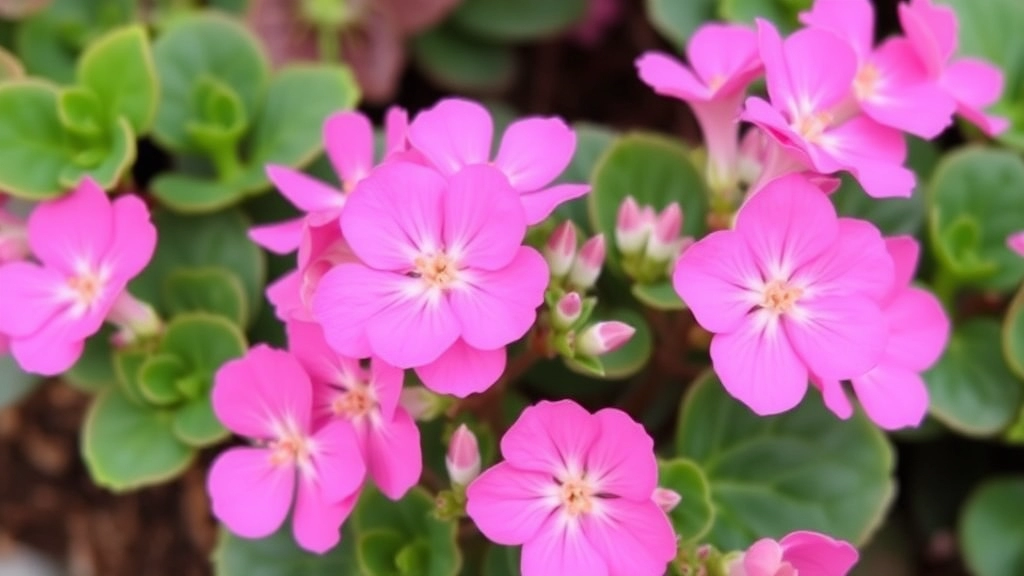Mastering Pink Kalanchoe Plant Care
Looking to master Pink Kalanchoe Plant Care? You’re in the right place. This vibrant succulent not only adds a pop of colour to your home but also requires specific care to thrive. Let’s dive into the essentials, from optimal lighting and soil mixes to watering schedules and pest management.
Lighting
First up, lighting is crucial. Pink Kalanchoes love bright, indirect sunlight. Too much direct light can scorch the leaves, while too little will stunt growth.
Soil
Next, focus on soil. A well-draining mix, ideally a cactus or succulent blend, is perfect for preventing root rot.
Watering
Watering can be tricky—these plants prefer to dry out completely between waterings. Overwatering is a common mistake, so less is more.
Optimal Lighting for Pink Kalanchoe
When it comes to nurturing your Pink Kalanchoe, lighting is crucial. Have you ever wondered why your plant isn’t thriving? Often, it boils down to inadequate light.
Understanding Light Requirements
Pink Kalanchoe thrives in bright, indirect sunlight. This plant loves light but can be sensitive to harsh direct rays. Here’s how to ensure your Kalanchoe gets the right amount of light:
- Location: Place your plant near a south-facing window for optimal exposure.
- Duration: Aim for about 6 hours of light daily.
- Rotation: Rotate your plant weekly for even growth.
Signs of Insufficient Light
If your Kalanchoe is struggling, look for these signs:
- Leggy Growth: Stretched stems with sparse leaves indicate it’s reaching for light.
- Faded Colour: Leaves losing their vibrant hue may mean they need more brightness.
Adjusting Light Conditions
If your plant shows signs of distress, consider these adjustments:
- Supplemental Lighting: Use grow lights if natural light is limited.
- Seasonal Changes: Be mindful of shifting sunlight patterns throughout the year.
For more detailed care tips, check out our Complete Care Guide for Pink Florist Kalanchoe and learn how to create the perfect environment for your plant.
If you notice any other issues with your Kalanchoe, such as black spots on the leaves, visit our guide on Causes and Solutions for Black Spots on Kalanchoe Leaves to troubleshoot and ensure your plant stays healthy.
Best Soil Mixes for Healthy Growth
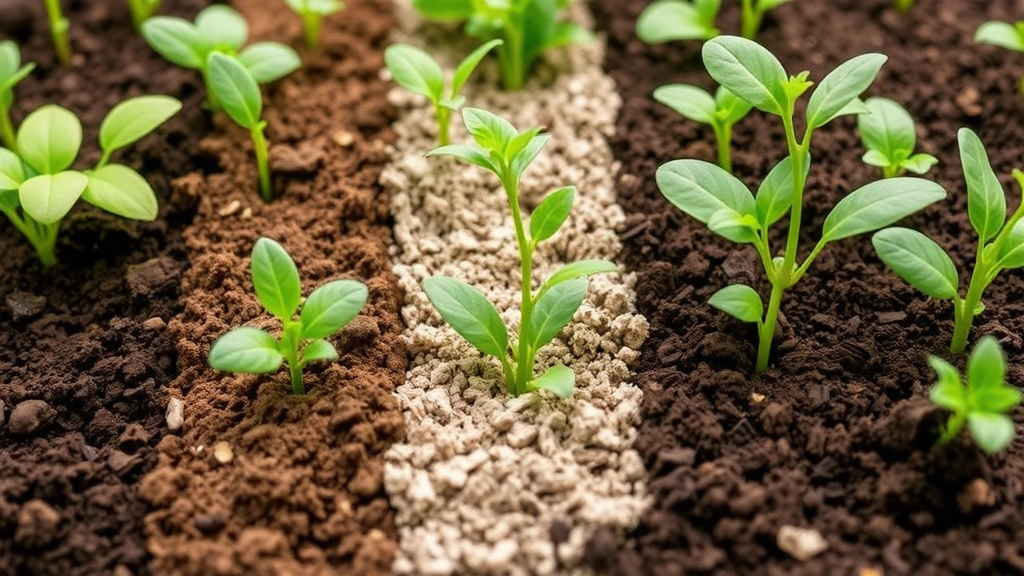
So, you’ve got your Pink Kalanchoe and you’re wondering, “What’s the best soil mix for it?”
You’re not alone in that thought!
Choosing the right soil is crucial for your plant’s health and vibrant blooms.
Why Soil Matters
The right soil mix can make all the difference in how your Kalanchoe grows.
It needs to drain well while still holding onto some moisture.
- Well-draining soil: Kalanchoes hate sitting in water. A mix that drains quickly is essential.
- Cactus or succulent mix: These are often perfect for Kalanchoes. They’re designed for plants that need good drainage.
- Adding perlite or sand: Mix in some perlite or coarse sand to improve drainage even further.
DIY Soil Mix Recipe
Want to make your own mix? It’s easy!
- 1 part potting soil: This provides the basic nutrients.
- 1 part perlite: Helps with drainage.
- 1 part coarse sand: Adds extra drainage and aeration.
Mix it all together, and you’ve got a winning combination!
Signs of Poor Soil
If your Kalanchoe isn’t thriving, check the soil.
- Yellowing leaves: This could mean it’s too wet.
- Mushy stems: A sign of root rot from overly dense soil.
Getting the soil right is a game-changer for your plant’s health.
Watering Guidelines: How Much and How Often
When it comes to caring for your Pink Kalanchoe, watering is often a source of confusion.
How much should you water? How often is too often?
Understanding the watering needs of your Pink Kalanchoe is crucial for its health and blooming potential.
Managing Temperature and Humidity
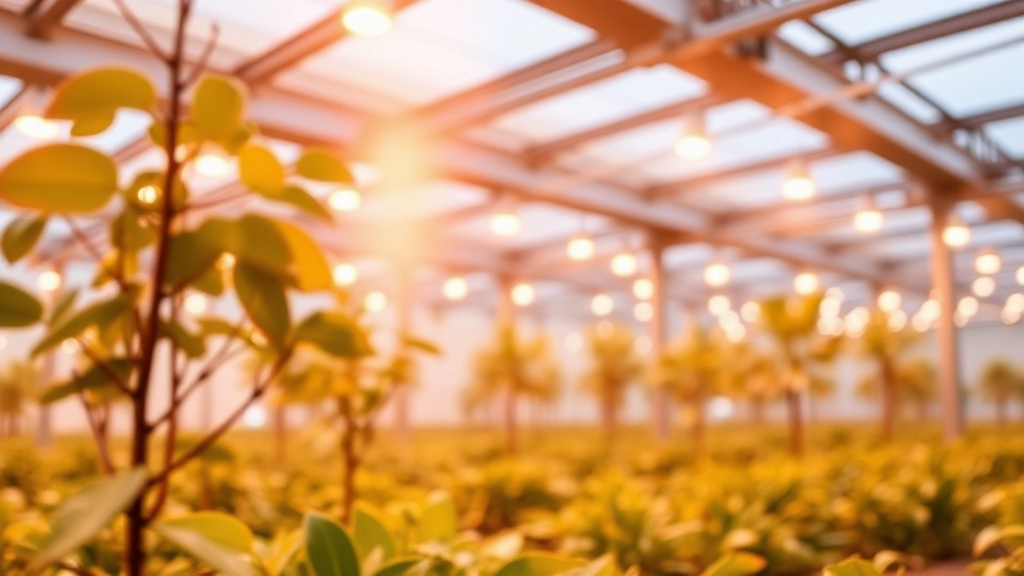
When caring for your Pink Kalanchoe, understanding the ideal temperature and humidity levels is crucial for its thriving health. Have you ever wondered why your plant isn’t blooming as expected? Temperature and humidity could be key factors.
Ideal Temperature Range
- Daytime: Aim for temperatures between 20°C to 24°C (68°F to 75°F).
- Nighttime: A slight drop to around 15°C to 18°C (59°F to 65°F) is beneficial.
Maintaining these temperatures encourages robust growth and vibrant blooms.
Humidity Levels
- Pink Kalanchoe prefers lower humidity levels, ideally around 40% to 50%.
- Too much humidity can lead to fungal issues, so ensure good air circulation around your plant.
Tips for Managing Temperature and Humidity
- Location Matters: Keep your Kalanchoe in a spot away from drafts, heaters, or air conditioning vents.
- Use a Thermometer: This helps monitor the temperature accurately.
- Humidity Trays: If your home is overly dry, consider placing a tray of water near the plant to increase humidity slightly without overdoing it.
Remember, consistent conditions are key. Sudden changes can stress the plant, leading to poor growth or even disease.
Fertilizing Your Pink Kalanchoe for Vibrant Blooms
As we delve into the essential care for your Pink Kalanchoe, fertilization plays a pivotal role in ensuring those stunning blooms flourish.
Why Fertilizing Matters
Are you noticing fewer flowers than expected? Or perhaps the leaves seem lacklustre? These could be signs that your Kalanchoe needs a nutrient boost. Proper fertilization not only promotes vibrant blooms but also supports overall plant health.
Choosing the Right Fertilizer
- Type: Opt for a balanced, water-soluble fertilizer with an N-P-K ratio of 15-30-15. This ensures your plant receives the necessary nitrogen, phosphorus, and potassium.
- Frequency: Fertilize every 4-6 weeks during the growing season (spring and summer). Reduce or stop in the fall and winter when the plant’s growth slows down.
Application Tips
- Dilution: Always dilute the fertilizer to half the recommended strength to prevent root burn.
- Watering: Apply fertilizer after watering your Kalanchoe. This helps the nutrients penetrate the soil more effectively.
Signs of Over-Fertilization
Be vigilant for signs such as yellowing leaves or a white crust on the soil surface. If these occur, rinse the roots with water to help flush out excess nutrients.
VI. Propagation Methods: Stem and Leaf Cuttings
So, you’ve got your Pink Kalanchoe thriving, and now you’re wondering how to multiply that beauty, right? Propagation can be a fun and rewarding way to expand your plant collection or share with friends. Let’s dive into the best methods to propagate your Pink Kalanchoe using stem and leaf cuttings.
Stem Cuttings
- Choose a Healthy Stem: Look for a robust, healthy stem. It should be free from any pests or diseases.
- Cut the Stem: Use clean, sharp scissors to snip a 4-6 inch cutting just below a leaf node. This is where new roots will form.
- Let It Callous: Place the cutting in a dry spot for a day or two. This allows the cut end to callous over, which helps prevent rot when you plant it.
- Plant in Soil: Fill a small pot with a well-draining soil mix. Insert the stem cutting about an inch deep.
- Water Sparingly: Give it a light watering, but don’t soak it. Keep the soil slightly moist but not wet.
- Provide Light: Place the pot in a bright location but out of direct sunlight.
- Wait for Roots: In a few weeks, you should see new growth, indicating roots are forming.
Leaf Cuttings
- Select a Leaf: Choose a healthy leaf from your Kalanchoe.
- Cut the Leaf: Use sharp scissors to cut the leaf into sections, each about 2-3 inches long. Ensure each section has a vein running through it.
- Callous the Cuttings: Let the leaf sections dry for a couple of days until the cut ends callous over.
- Plant in Soil: Place the leaf sections flat on the soil surface, pressing them down slightly.
- Water Lightly: Mist the soil to keep it slightly moist, but avoid overwatering.
- Keep in Indirect Light: Like the stem cuttings, keep the pot in a bright area but out of direct sunlight.
- Watch for Growth: Leaf cuttings may take longer to root, so be patient. In a few weeks, you should see tiny plants emerging from the base of the leaf.
Propagation is not just a way to expand your collection; it’s like creating little green gifts for friends and family!
Pruning and Shaping for Fuller Growth
After ensuring your Pink Kalanchoe receives optimal light and the right soil mix, it’s time to focus on pruning and shaping to encourage fuller growth.
Why Pruning Matters
Pruning is essential for maintaining the health and appearance of your Pink Kalanchoe. It promotes bushier growth, enhances airflow, and prevents leggy stems.
Seasonal Care: Winter and Summer Adjustments
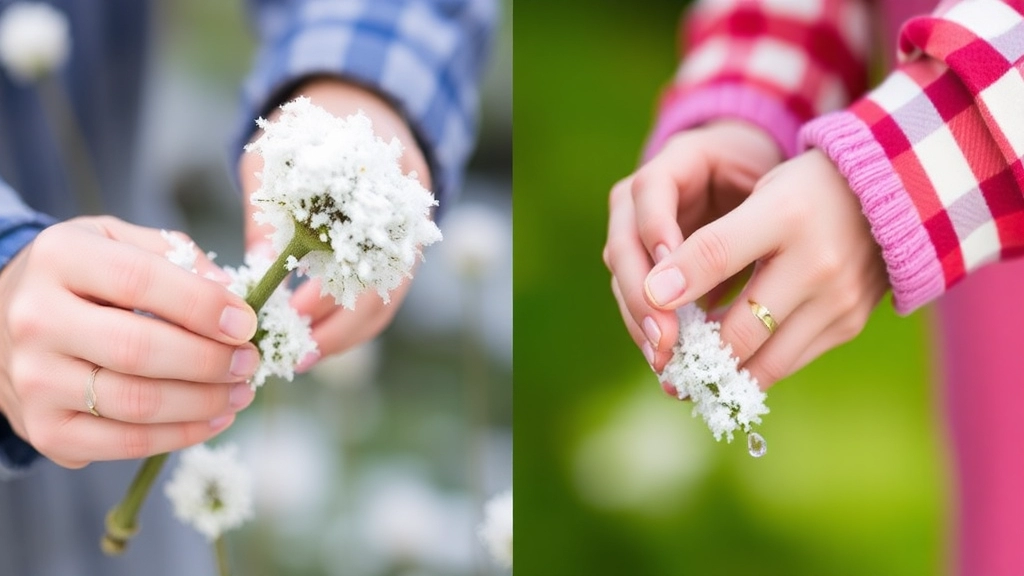
Have you ever wondered how to keep your Pink Kalanchoe thriving through the changing seasons?
Winter Care Tips:
- Light: During winter, sunlight is limited. Place your Kalanchoe near a south-facing window to soak up as much light as possible.
- Temperature: Keep your plant in a warm spot, ideally between 15°C to 21°C. Avoid cold drafts, as they can stress the plant.
- Watering: Cut back on watering. The plant needs less moisture in winter. Water only when the top inch of soil feels dry.
- Humidity: Dry indoor air can be tough on your Kalanchoe. Consider using a humidity tray or a small humidifier to keep things comfy.
Summer Care Tips:
- Light: In summer, your Kalanchoe loves bright, indirect sunlight. Too much direct sun can scorch those beautiful leaves.
- Temperature: Your plant thrives in warmer temperatures, ideally between 20°C to 26°C. Just be cautious of extreme heat.
- Watering: Increase watering frequency as the soil dries out faster. Aim for a deep soak, allowing excess water to drain.
- Humidity: Kalanchoes prefer moderate humidity. If your home is dry, mist the leaves occasionally to keep them happy.
Common Pests and How to Manage Them
As we delve deeper into caring for your Pink Kalanchoe, it’s crucial to address the common pests that can disrupt its vibrant growth.
Many plant enthusiasts often worry about pests like aphids, mealybugs, and spider mites. These unwelcome visitors can cause significant damage if left unchecked. Here’s how to identify and manage them effectively:
Common Pests
- Aphids
- Small, green or black insects that cluster on new growth.
- They suck sap from the plant, leading to wilting and yellowing leaves.
- Mealybugs
- White, cotton-like masses found in leaf joints and on stems.
- They also feed on sap, causing stunted growth and leaf drop.
- Spider Mites
- Tiny, spider-like creatures often found on the undersides of leaves.
- They create fine webbing and cause leaves to become speckled or discolored.
Management Strategies
- Regular Inspection
- Check your plant weekly for signs of pests.
- Early detection is key to preventing infestations.
- Natural Remedies
- Use insecticidal soap or neem oil to combat pests.
- Spray the affected areas thoroughly and repeat every week until the problem is resolved.
- Physical Removal
- For mealybugs, use a cotton swab dipped in alcohol to remove them manually.
- A strong stream of water can dislodge spider mites.
- Maintain Plant Health
- A well-cared-for plant is less susceptible to pests.
- Ensure proper watering, lighting, and nutrition. For more detailed care tips, check out our Complete Guide to Kalanchoe Plant Care.
Additionally, if you’re looking to expand your collection, consider exploring the various Kalanchoe Mother of Thousands varieties available, which are both beautiful and relatively easy to care for.
Dealing with Diseases like Root Rot and Powdery Mildew
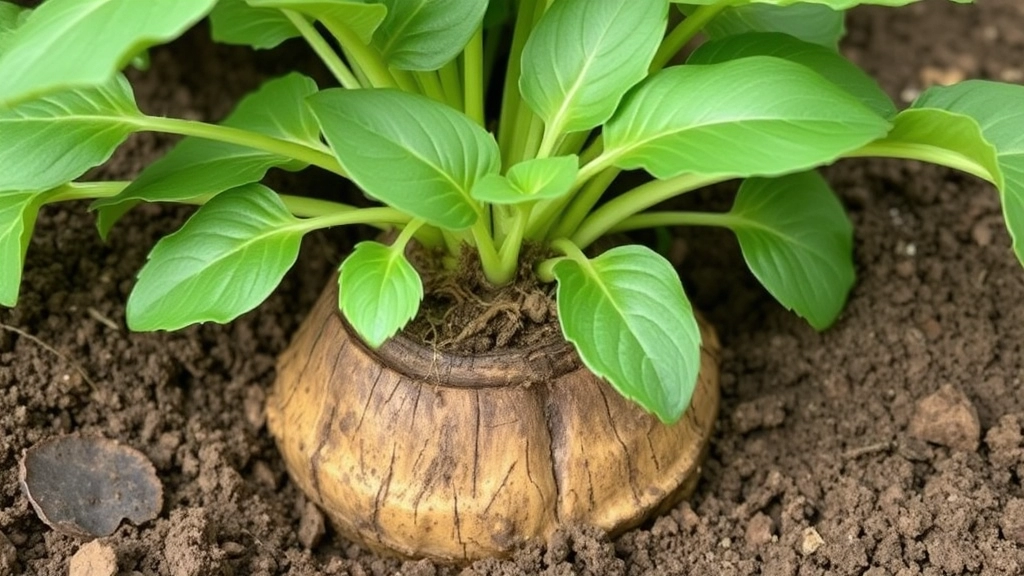
Let’s face it, as much as we love our pink Kalanchoe, dealing with diseases can be a real downer.
Have you ever noticed your plant looking a bit off, or perhaps the leaves are turning yellow?
Two of the most common culprits are root rot and powdery mildew.
Root Rot: What You Need to Know
Root rot is often a result of overwatering.
Here’s how to spot it:
- Yellowing Leaves: If your leaves are turning yellow and mushy, it’s a sign.
- Foul Smell: A rotten smell coming from the soil? That’s a big red flag.
- Wilting: Even if the soil is wet, your plant might still look droopy.
How to Fix Root Rot
- Inspect the Roots: Gently remove your plant from its pot and check the roots.
- Trim Away Rot: Cut off any mushy, dark roots with sterilised scissors.
- Repot: Use fresh, well-draining soil. A cactus mix works wonders.
- Adjust Watering: Let the soil dry out completely before the next watering.
Powdery Mildew: The White Fuzz
Now, let’s talk about powdery mildew.
Ever seen a white, powdery substance on your leaves?
That’s powdery mildew, and it thrives in high humidity and poor air circulation.
How to Combat Powdery Mildew
- Increase Airflow: Place your plant in a spot with good air circulation.
- Water Wisely: Water at the base of the plant to keep the leaves dry.
- Fungicides: If it gets out of hand, a fungicide spray can help.
Prevention is Key
- Sunlight: Ensure your Kalanchoe gets plenty of bright, indirect sunlight.
- Avoid Overcrowding: Give your plants enough space to breathe.
Troubleshooting Non-Blooming Plants
Have you ever found yourself gazing at your Pink Kalanchoe, only to notice it stubbornly refusing to bloom? You’re not alone in this gardening predicament. Many plant enthusiasts face the same issue, and it can be frustrating. Let’s explore the common reasons behind this lack of blooms and how to address them effectively.
Potting and Repotting Tips for Longevity
Ever found yourself wondering when the right time is to pot or repot your Pink Kalanchoe? You’re not alone! Many plant lovers grapple with this question.
Why Potting Matters
Potting your Kalanchoe correctly can make all the difference in its health and growth. A well-chosen pot and soil mix can help your plant thrive.
When to Repot
- Signs Your Plant Needs Repotting:
- Roots are poking out of the drainage holes.
- Soil dries out too quickly.
- The plant looks top-heavy or is leaning.
Choosing the Right Pot
- Size: Go for a pot that’s about 1-2 inches larger in diameter than the current one.
- Material:
- Terracotta pots are great for drainage.
- Plastic pots retain moisture but can lead to root rot if not monitored.
Soil Mix
A good mix for Kalanchoe should be:
- Well-draining (consider adding perlite or sand).
- Slightly acidic to neutral (pH 6.0-7.0).
Repotting Steps
- Prepare Your Materials: New pot, soil mix, and tools like a trowel and gloves.
- Remove the Plant: Gently slide the plant out of its old pot, loosening the root ball if needed.
- Inspect the Roots: Trim any dead or mushy roots with clean scissors.
- Add Soil: Place a layer of fresh soil at the bottom of the new pot.
- Position the Plant: Center your Kalanchoe and fill in around the edges with soil.
- Water Lightly: Give it a gentle drink to settle the soil but avoid soaking it.
Aftercare Tips
- Keep your repotted plant in a shaded area for a week.
- Gradually reintroduce it to bright light.
For more detailed guidance, check out our step-by-step guide on planting Kalanchoe in a pot. Additionally, if you’re wondering why your Kalanchoe might not be flowering, our guide on causes and solutions for non-flowering Kalanchoe can provide valuable insights.
FAQs on Pink Kalanchoe Plant Care
What is the best soil mix for Pink Kalanchoe?
The best soil mix for Pink Kalanchoe is a well-draining one. A cactus or succulent mix works well, and you can enhance drainage by adding perlite or coarse sand.
Why is well-draining soil important for Pink Kalanchoe?
Well-draining soil is crucial because Kalanchoes dislike sitting in water. Poor drainage can lead to root rot and other issues.
How can I make my own soil mix for Pink Kalanchoe?
You can create a DIY soil mix by combining 1 part potting soil, 1 part perlite, and 1 part coarse sand. This mix provides good drainage and aeration.
What are the signs of poor soil for Pink Kalanchoe?
Signs of poor soil include yellowing leaves, which may indicate overwatering, and mushy stems, a sign of root rot from overly dense soil.
What is the ideal temperature range for Pink Kalanchoe?
During the daytime, aim for temperatures between 20°C to 24°C (68°F to 75°F). At night, a slight drop to around 15°C to 18°C (59°F to 65°F) is beneficial.
What humidity levels do Pink Kalanchoe prefer?
Pink Kalanchoe prefers lower humidity levels, ideally around 40% to 50%. Too much humidity can lead to fungal issues, so good air circulation is essential.
How can I propagate Pink Kalanchoe?
You can propagate Pink Kalanchoe using stem or leaf cuttings. For stem cuttings, choose a healthy stem, let it callous, and plant it in well-draining soil. For leaf cuttings, cut healthy leaves into sections, let them callous, and place them on the soil surface.
How should I care for Pink Kalanchoe in winter?
In winter, place your Kalanchoe near a south-facing window for maximum light, keep it in a warm spot (15°C to 21°C), reduce watering, and maintain humidity with a tray or humidifier.
What are the summer care tips for Pink Kalanchoe?
In summer, provide bright, indirect sunlight, maintain temperatures between 20°C to 26°C, increase watering frequency, and mist leaves occasionally if the air is dry.
How can I prevent and treat root rot in Pink Kalanchoe?
To prevent root rot, ensure well-draining soil and avoid overwatering. If root rot occurs, trim away affected roots, repot in fresh soil, and adjust your watering habits.
What is powdery mildew and how can I treat it?
Powdery mildew appears as a white, powdery substance on leaves and thrives in high humidity and poor air circulation. Increase airflow, water at the base, and use fungicides if needed.
How can I prevent diseases in Pink Kalanchoe?
Prevention includes providing plenty of bright, indirect sunlight, avoiding overcrowding, and ensuring good air circulation around the plant.
References
-
Kalanchoe Soil Requirements
-
How to Grow Kalanchoe Succulents Indoors
-
Kalanchoe: How to Grow and Care for Kalanchoe
